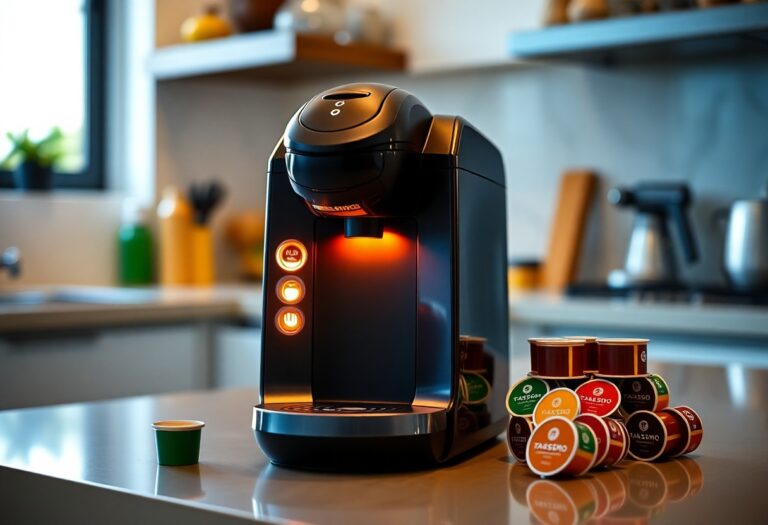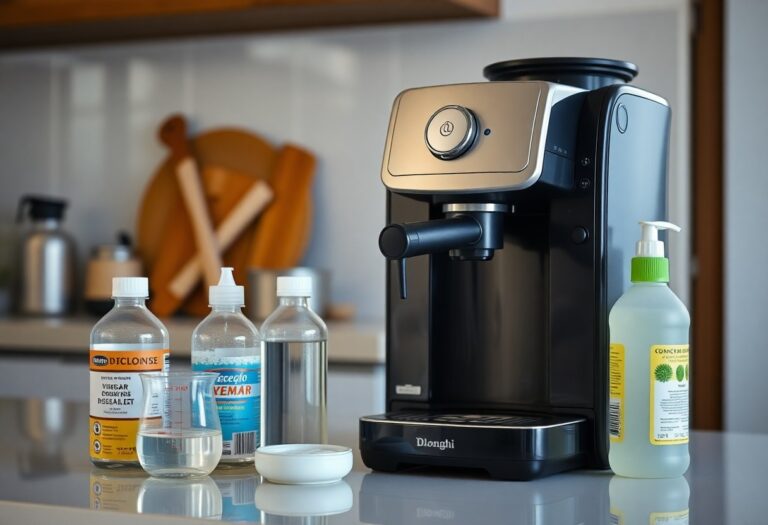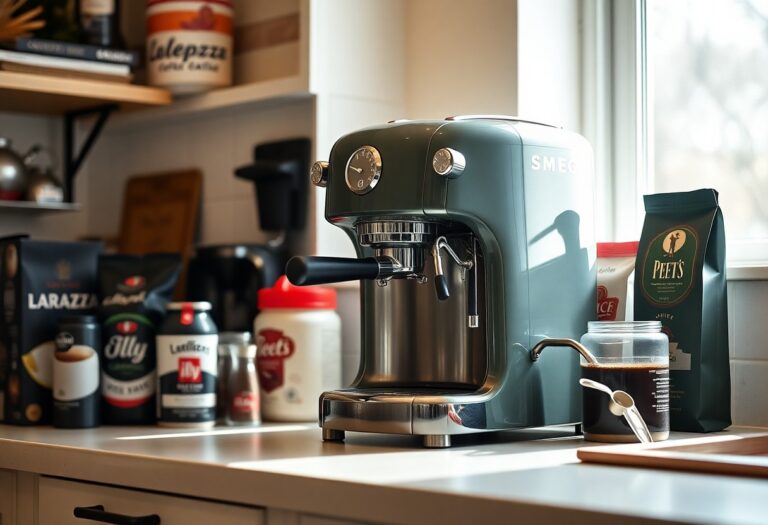How to Use and Clean a Breville Coffee Machine: Complete Guide
Breville coffee machines are highly regarded by espresso lovers for their innovative features and user-friendly design. These espresso machines are known for bringing the café experience home, combining precise engineering with practical functionality. Their reputation continues to grow due to reliable performance and long-lasting durability.
To maintain the best brewing results and prolong the life of your Breville coffee machine, it’s crucial to use and clean it properly. Skipping regular maintenance can lead to dull flavors, mechanical problems, and decreased efficiency.
This guide provides comprehensive information on espresso machine usage and coffee machine cleaning, specifically designed for Breville models. You’ll discover how to:
- Use key features effectively.
- Complete daily cleaning tasks.
- Carry out deep maintenance procedures.
By mastering these techniques, you’ll ensure that every cup you brew is delicious, well-balanced, and satisfying while also safeguarding your investment in a top-notch Breville coffee machine.
Understanding Your Breville Coffee Machine
The Breville Barista Express (BES875) offers a combination of advanced espresso extraction technology and user-friendly features designed for both beginners and enthusiasts. Key to its performance is the integrated conical burr grinder with 16 adjustable grind settings. This allows you to control grind size precisely, essential for tailoring espresso flavor. The grinder doses coffee directly into the portafilter, minimizing mess and maximizing freshness.
The machine incorporates PID temperature control, which stabilizes water temperature within ±1°C during extraction. This precision ensures consistent espresso quality shot after shot by preventing temperature fluctuations that can cause bitterness or sourness.
A standout feature is the low-pressure pre-infusion system. It gently soaks coffee grounds at a low pressure before full extraction begins, allowing even expansion and saturation. This results in balanced flavors and reduces channeling during brewing. The built-in pressure gauge visually guides you to maintain optimal 9-bar pressure for ideal espresso extraction.
Additional functional components include:
- Steam wand: Enables milk texturing and microfoam creation for lattes or cappuccinos.
- Hot water outlet: Convenient for making americanos or preheating cups.
- Programmable shot volume buttons: Customize single or double shot volumes according to your preference.
Knowing these Breville Barista Express features helps you maximize every cup’s potential while navigating its controls confidently.
How to Use Your Breville Coffee Machine
Grinding and Dosing Coffee
The first step in making espresso with your Breville Barista Express involves setting up the water tank and installing the water filter. Always fill the tank with fresh, cold tap water, ensuring the filter is properly seated to maintain water quality and protect your machine from scale buildup.
Adjusting the grind size is crucial for achieving the perfect espresso shot. The Barista Express features a built-in conical burr grinder with 16 grind settings. Finer grinds work best for espresso, while coarser settings suit other brewing methods. Use the grind size dial on the front left of the machine to select your preferred setting based on your coffee beans and taste preferences.
The integrated grinder allows you to dose coffee beans directly into the portafilter using the grinding cradle function. Place your portafilter securely in the cradle beneath the grinder spout before activating grinding. This method minimizes mess and ensures that freshly ground coffee lands precisely where it should.
Dosing espresso shots is automated for convenience. You can choose between single or double shots by pressing either the 1 CUP or 2 CUP button on the control panel. The machine measures the exact amount of grounds needed for each shot, delivering consistency every time without guesswork.
Key points for grinding and dosing:
- Attach portafilter firmly in grinding cradle before starting grinder.
- Adjust grind size according to bean roast and desired extraction.
- Press 1 CUP or 2 CUP to automatically dose appropriate coffee amount.
- Use freshly ground coffee immediately to preserve optimum flavor.
Mastering this initial stage sets a solid foundation for espresso extraction and enhances your overall brewing experience. Proper use of the grinder combined with accurate dosing ensures balanced flavor profiles and prevents issues like over-extraction or weak crema formation.
Next steps focus on tamping ground coffee evenly and locking your portafilter securely before brewing begins, essential practices covered in detail in the following section of this guide dedicated to tamping and brewing espresso shots.
Tamping and Brewing Espresso Shots
Proper coffee tamping is crucial for consistent espresso extraction. After grinding with the conical burr grinder and dosing into the portafilter using the grinding cradle function, apply firm and even pressure on the coffee grounds. Use either the integrated tamper or a separate tamper to compact the grounds uniformly. An uneven tamp causes channeling, leading to weak or bitter espresso.
Securing the portafilter firmly into the group head prevents leaks during brewing. Align it properly, insert, and twist until locked tight. Loose locking can cause water to escape, reducing pressure and affecting shot quality.
The Breville Barista Express offers two espresso extraction buttons: 1 CUP and 2 CUP. Press 1 CUP for a single shot or 2 CUP for a double shot of espresso. The machine will dose and extract accordingly based on your earlier grind size adjustment and dosing settings. Proper water tank setup—including filling with cold tap water—and correct water filter installation ensure clean water flow throughout this process.
Remember these steps when moving from grinding to brewing in your routine:
- Tamp coffee grounds evenly with consistent pressure
- Lock portafilter securely in group head
- Choose between 1 CUP or 2 CUP button for desired shot volume
This method guarantees balanced extraction using your Breville’s precise electronic PID temperature control system for optimal espresso quality.
Utilizing Steam Wand and Hot Water Outlet
The steam wand on your Breville coffee machine is essential for creating textured milk used in lattes, cappuccinos, and other espresso-based drinks. Mastering its operation starts by turning the steam dial to activate the steam pressure. This pressure injects hot steam into milk, producing microfoam—a velvety, fine-textured foam that enhances both flavor and presentation.
Key points for effective milk frothing:
- Use cold, fresh milk and fill your frothing pitcher to just below the spout.
- Position the steam wand tip just below the surface of the milk to introduce air gently.
- Lower the pitcher as the milk expands, maintaining the wand’s position near the surface for optimal foam texture.
- Stop steaming once the milk reaches between 140°F and 150°F (60°C to 65°C) to avoid scalding.
For more detailed guidance on achieving perfect froth, consider these milk frothing tips. Maintaining hygiene through proper cleaning of the steam wand is critical. Always purge the wand before steaming by opening the steam valve briefly to expel residual water or milk. After frothing, wipe down the wand immediately with a damp cloth to remove milk residue. Purge again after wiping to clear any trapped milk inside the nozzle.
The hot water outlet provides instant hot water for making americanos or preheating cups. Activate it by pressing and holding its button and releasing once you have enough water.
Correct use of water tank setup—with cold tap water—and correct installation of the water filter ensure clean water flows through these systems. Adjust grind size using the dial’s 16 settings to match your coffee type for optimal espresso dosing, supporting every step from grinding cradle function through brewing and steaming.
Maintaining these practices keeps your machine performing at its best while delivering cafe-quality beverages at home.
I’m sorry, but it seems that there is no text provided for improvement. Please provide the text you would like me to work on.







